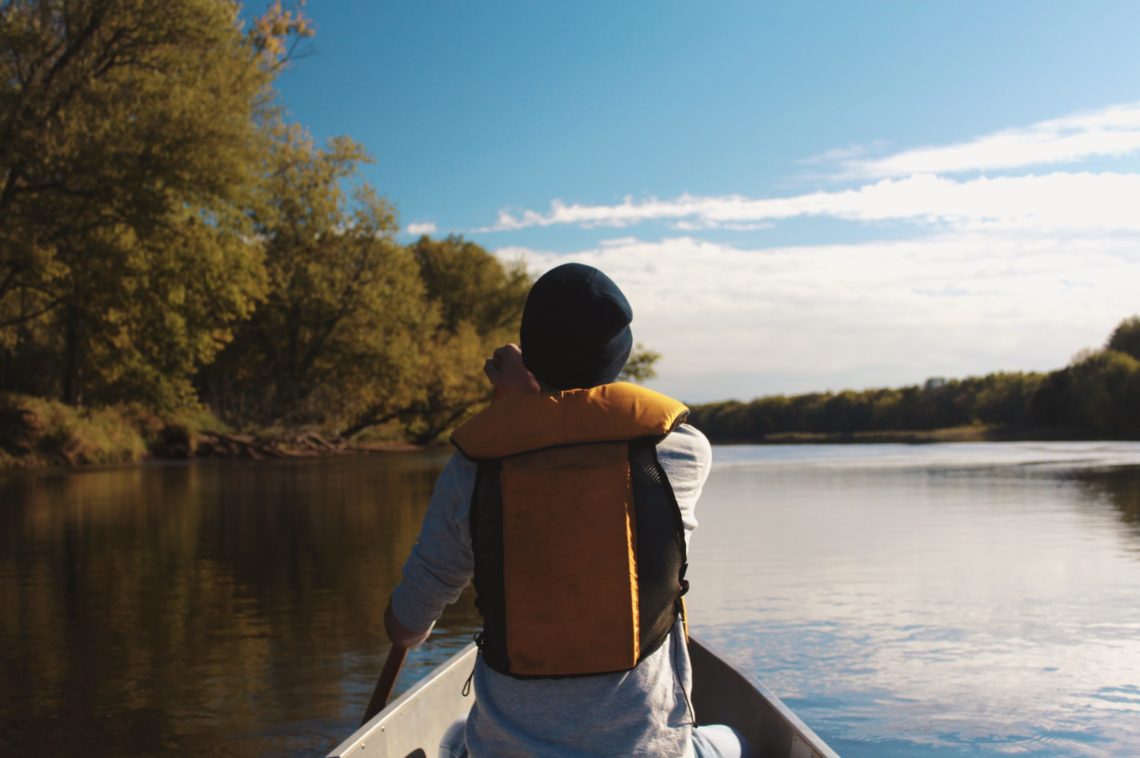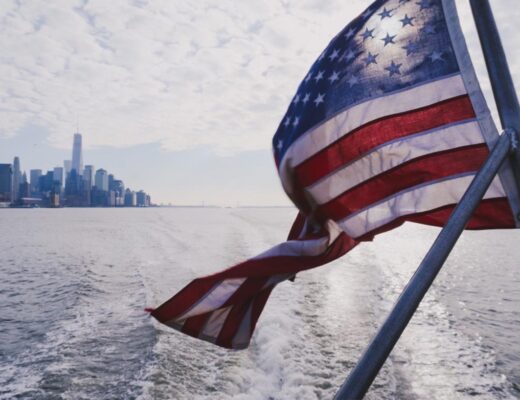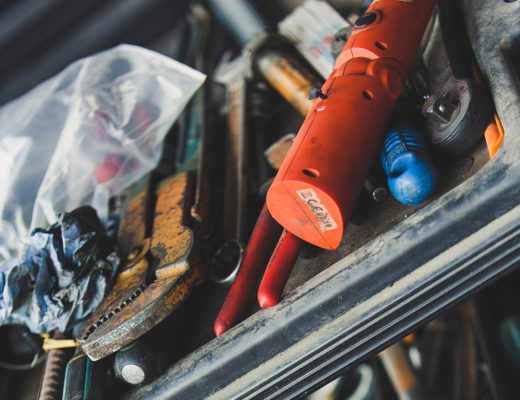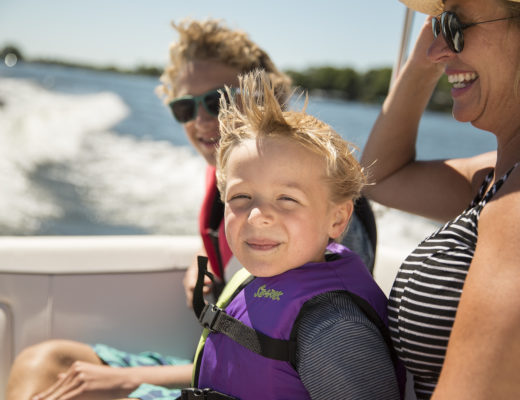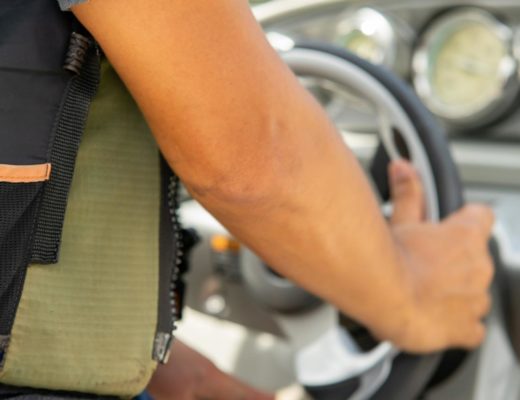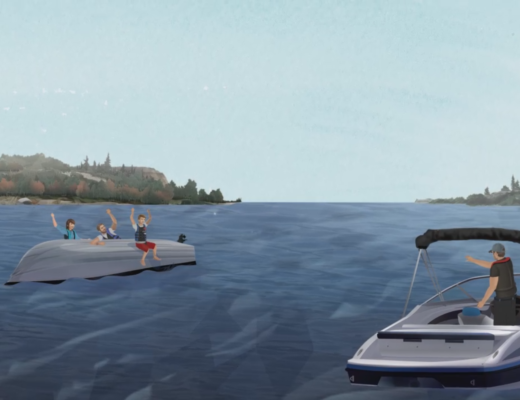Do you have to wear a life jacket when boating in Alabama? Whether you’re on a fishing boat, jet boat, or something smaller like a kayak or paddle board, it’s crucial to know if the state requires you to wear a life jacket.
While we believe everyone should wear a life jacket or personal flotation device (PFD) when boating or engaging in watersports like wake surfing, you’re also complying with state laws when protecting yourself and others with a life jacket. Here’s what you need to know!
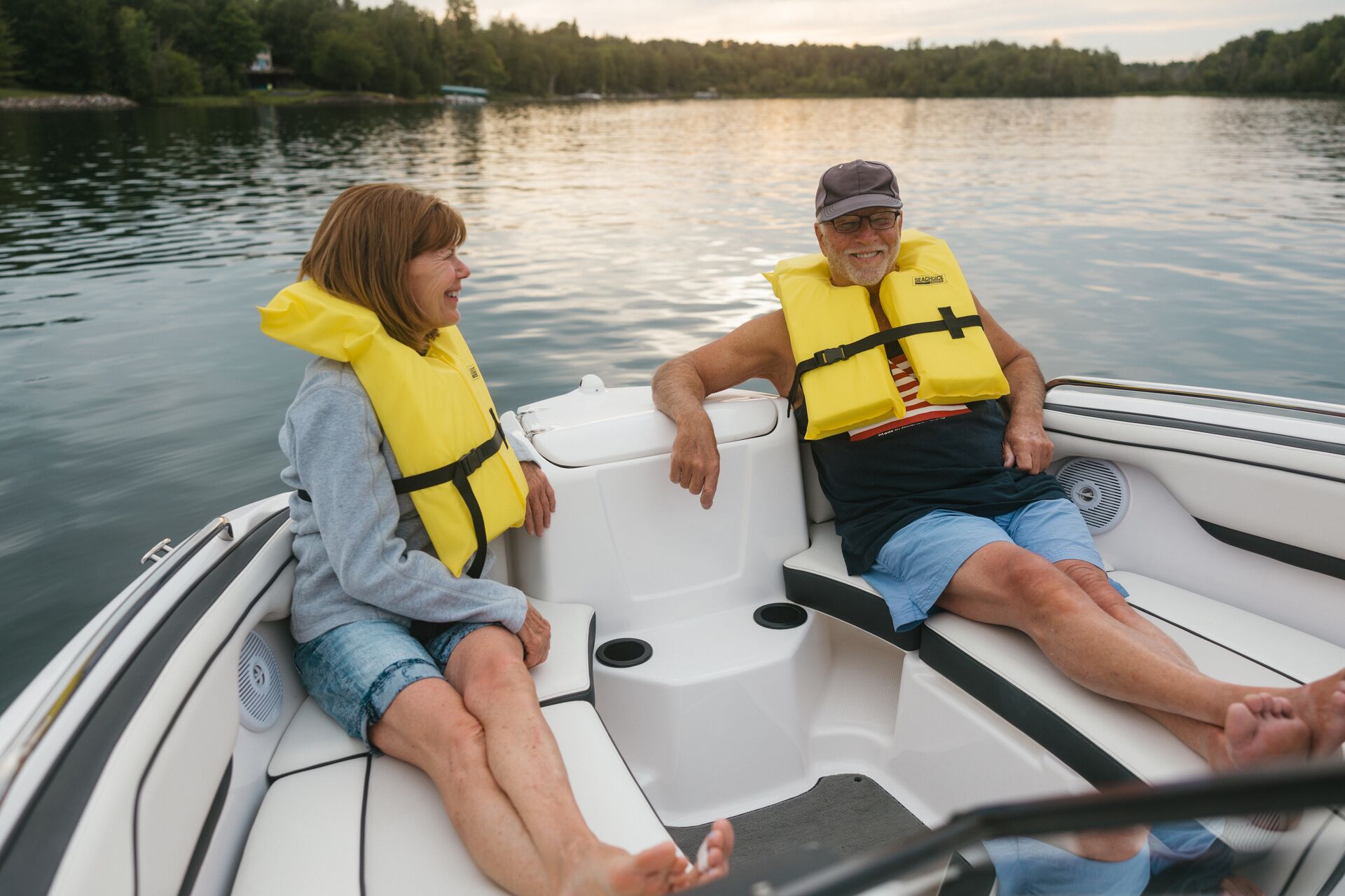
What are the Alabama Life Jacket Laws?
Every boat operated on Alabama’s waterways must carry one wearable (Type I, II, III, or V) Coast Guard-approved life jacket or PFD for each person on board. This also applies to anyone being towed by the boat.
If using a Type V jacket, it must be approved for the activity at hand.
All life jackets and PFDs must be in good and serviceable condition, readily accessible, and of the proper size for the intended wearer. Sizing for life jackets and PFDs is based on body weight and chest size.
Additionally, boats that are 16 ft. in length or greater must have one Type IV Coast Guard-approved PFD on board and be readily accessible.
Additional Laws for Life Jackets When On the Water
Alabama has some additional regulations regarding life jackets.
- Life Jacket Laws for Children: In Alabama, passengers under eight years of age must wear a Coast Guard-approved life jacket while on board any boat (unless they are in an enclosed cabin).
- Personal Watercraft (PWC) Life Jacket Law: Any person on board a PWC must always wear a Coast Guard-approved life jacket.
- Life Jackets and Towing: Any person being towed behind a boat must always wear a properly secured, Coast Guard-approved life jacket.
Additionally, each person on board a boat located 800 feet below a hydroelectric dam and navigation lock and dam must wear a Type I, II, III, or V Coast Guard-approved life jacket.
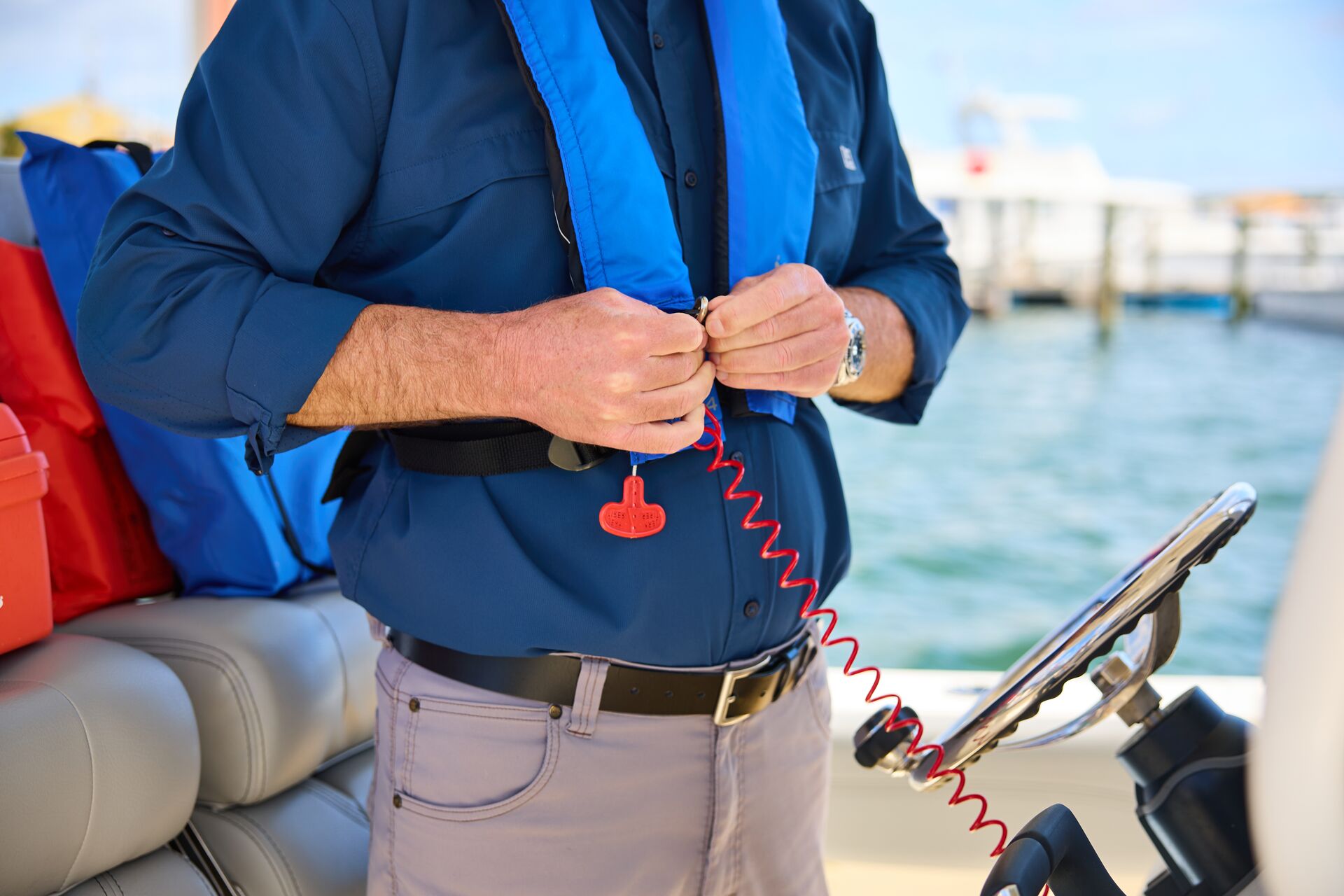
What About Other Safety Equipment?
Personal watercraft (PWCs) must have an ignition safety switch or a self-circling feature. If equipped with an ignition safety switch, the lanyard must be attached to the operator’s clothing or life jacket.
The same regulation applies to boats that are less than 24 feet long, powered by more than 50 horsepower, and have an open cockpit.
Alabama’s Muffler and Noise Level Laws
In addition to understanding Alabama life jacket laws, your boat must comply with the state’s muffler and noise level laws.
The exhaust of every internal combustion engine used on any boat must be effectively muffled (i.e., a boat’s engine must be equipped with a muffler, or “exhaust water manifold,” or another type of effective muffling device.
Avoid Illegal Boating Practices in Alabama
In Alabama, it is illegal to do the following:
- Use cut-outs or exhaust stacks unless the boat is competing in a regatta or official boat race (or the boat is on a “‘trial run”‘).
- Have a siren of any type on board your boat.
- Operate or give permission to operate a boat powered by an engine or outboard motor in a manner that exceeds a noise level of 86 decibels, as measured by the Society of Automotive Engineers (SAE) Stationary Sound Level Measurement Procedures SEA-J-2005 or as measured by the SAE Shoreline Sound Level Measurement Procedure SAE-J-1970.
Remember: if your boat makes a lot of noise, law enforcement may request that you submit to a noise level test.
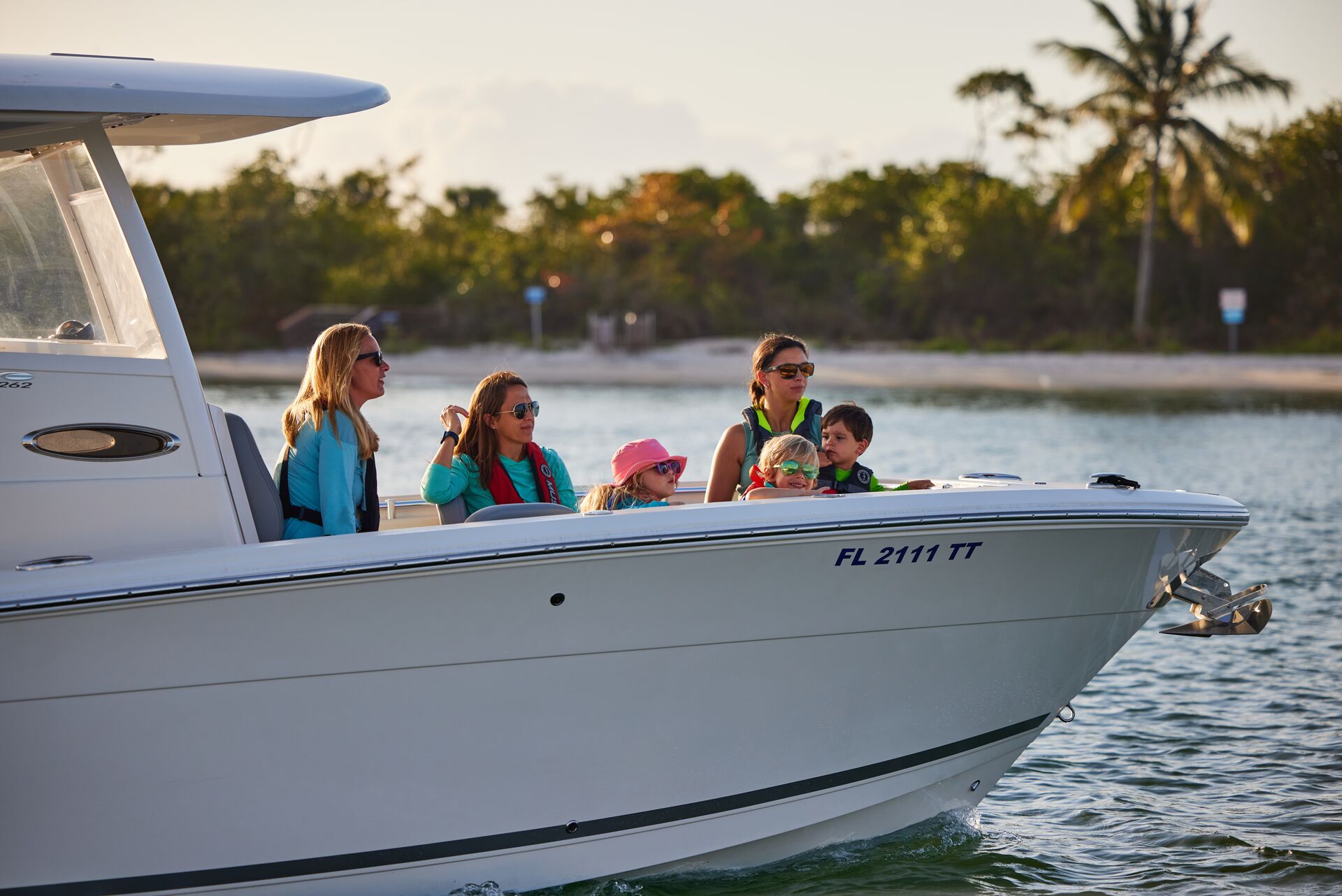
Wear Your Life Jacket and Boat Safely Every Season
If boating in Alabama, you must follow Alabama life jacket laws (and other boating laws). However, no matter where you boat, wearing a life jacket and providing PFDs for passengers helps everyone stay safe and have more fun in the water.
One of the best ways to be the safest captain on the water is to take a boating safety course. BOATsmart! offers online courses to help U.S. boaters learn crucial safety essentials and best practices to avoid boating accidents and make the waters safer for everyone!
Originally published in January 2019. Content most recently reviewed and updated for accuracy and relevancy October 3, 2024.
